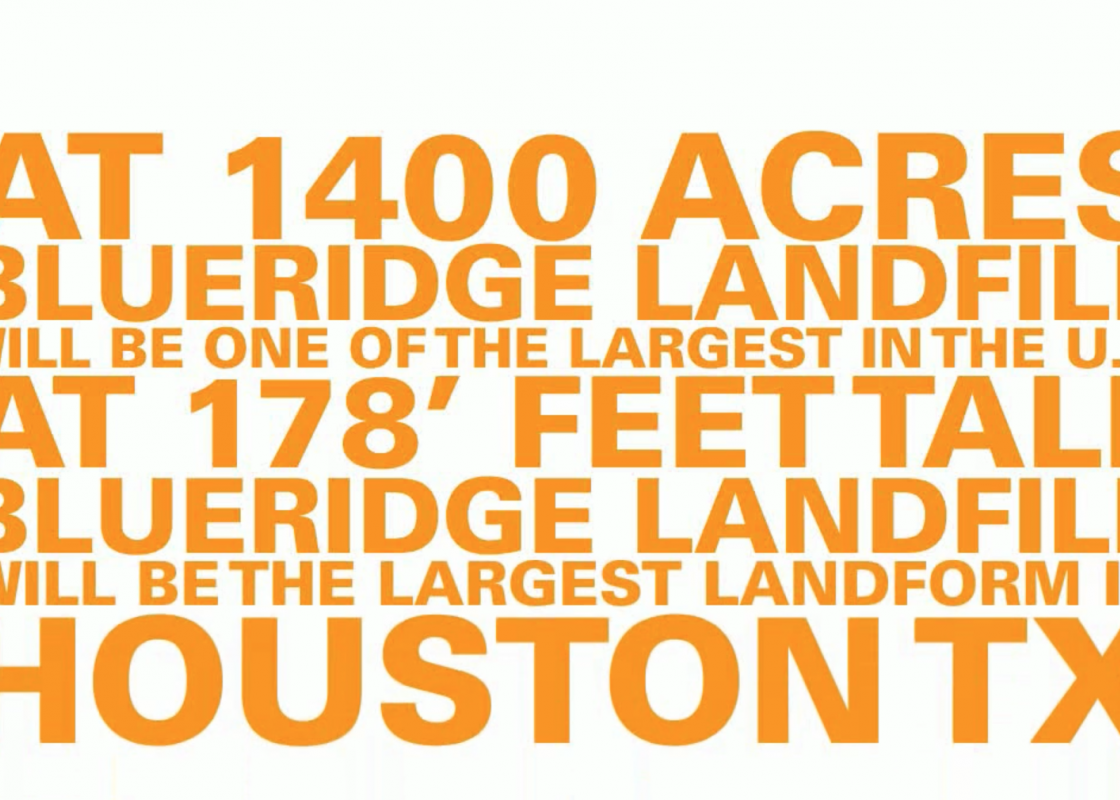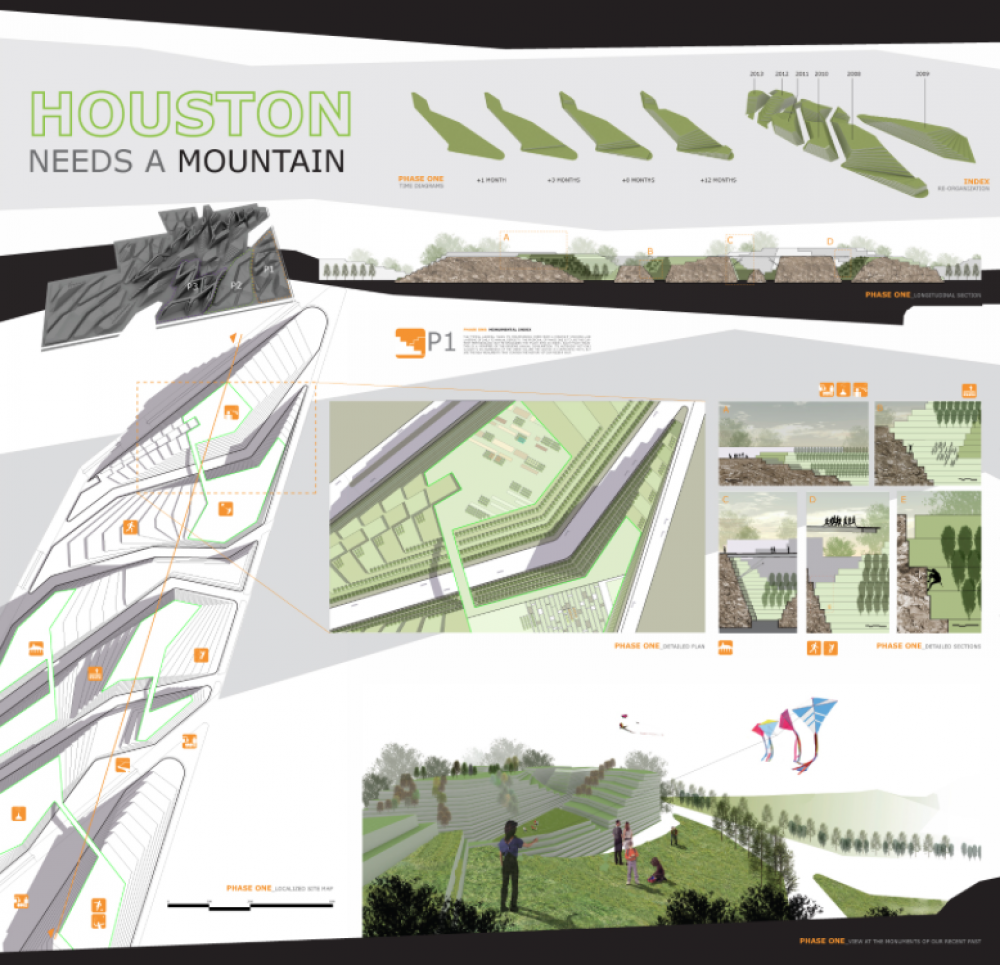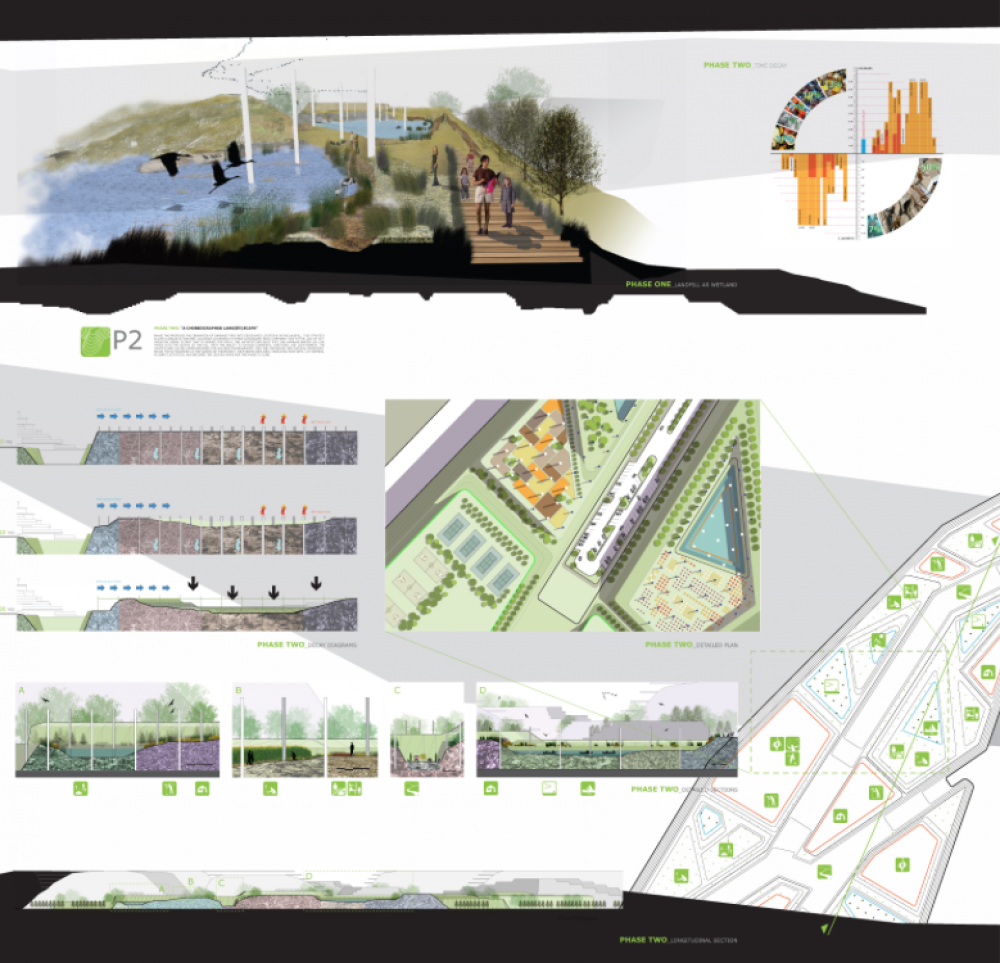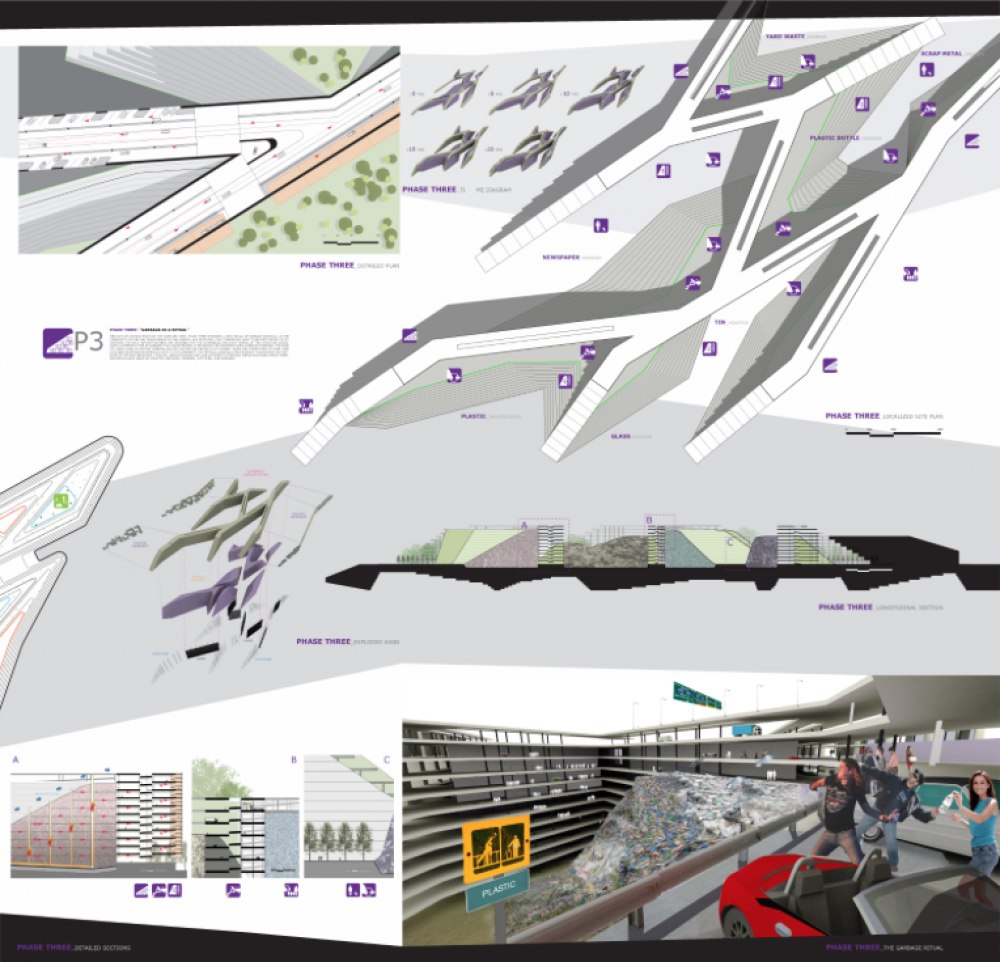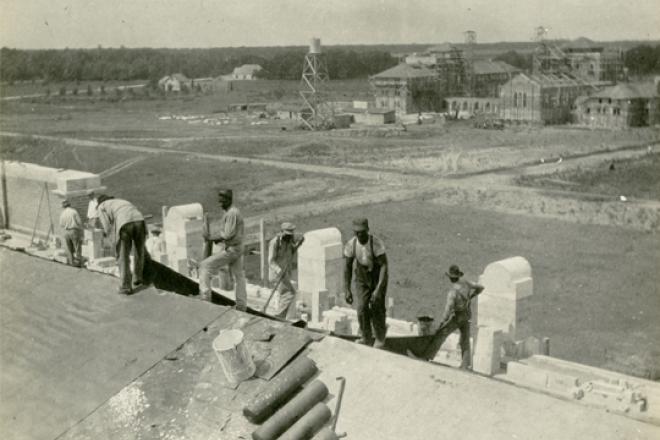This project was Lysle Oliveros’s 2009 Masters Thesis project. The concept originated as a point of humor during a dinner party. “I asked my neighbor if he recently mulched the yard (due to a pungent odor), and he replied that the smell was from a local landfill established previous to the housing development.”
Subsequently, in further study, Oliveros noted the Blue Ridge Landfill sought a permit to possibly be one of the largest and tallest earth formations in Texas—in short, a “Mega Landfill.” “It wasn’t my intention to join the ranks of the opposition and create an architectural idea that tried to solve the problem or even to act as an advocate to stop the mountain of garbage; I simply asked what role an architect or designer can have with an infinite amount of fill material and a concerned community.”
The thesis looks at three interventions to our garbage habits, with the intention that the architect and the community could actually shape and sculpt a landscape and reverse negative landfill stereotypes to create land value and natural amenities from current and future methods of consumption.
Phase One: Monumental Index
The current methodology of garbage collection is stacking garbage into a large garbage mountain. In this phase the community would continue this current method, but rather than creating one large mountain over time, each year would be its own autonomous mountain, creating an annual “index.” Each monument compared to the next would create an awareness of the massive amount of disposed consumer goods. For example, the 2008 “index” created by Hurricane Ike debris would have been 400 feet tall.
Phase Two: Choreographing the “Waste-scape”
Phase two explores the decay rates of garbage. With some items decaying faster than others, the landfill would be sectioned off to compartmentalize garbage by type. The architecture is interfaced with sized tubes to control the air and water that reaches the material. Through these apertures and garbage segregation, the “waste-scape” can be choreographed not only into a desired form or shape, but could also generate new programs such as lot farms, wetlands, leisure activities, bird migration stop offs, and nature trails. The monuments contain the history of our recent past.
Phase Three: Garbage Behavior: the New Cultural Ritual
The excitement of the community creates a new ritual. Infrastructure is inserted for the automobile, and all garbage is completely separated and is literally turned on its side to become vertical fills.
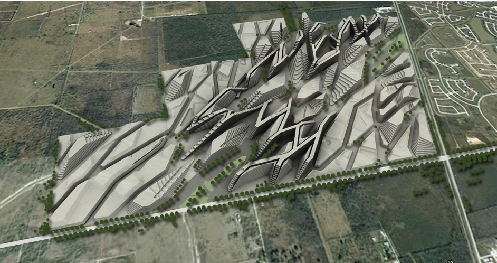
Bird's Eye View
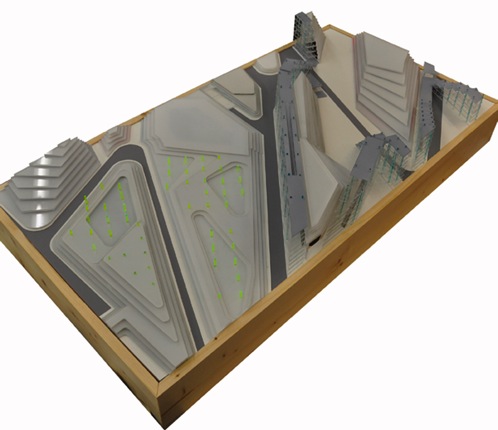 Physical Model Photographs
Physical Model Photographs
Lysle Oliveros is a project designer at Morris Architects, a design firm based in Houston, Texas. His current work there included collaborating on the firm’s entry to the international competition Urban Re:Vision DALLAS, which received an Honorable Mention. Lysle received his Bachelors of Architecture from the Ohio State University and was recently awarded his Masters of Architecture degree from Rice University. This education has given him a personal perspective to use architecture as a vehicle to serve the people and environments it is designed for, and to research and explore positivity in our inevitability.
For more information on the Blue Ridge Landfill
Blue Ridge Landfill Settlement: Shadow Creek Ranch’s New Race Against Waste [Swamplot]


